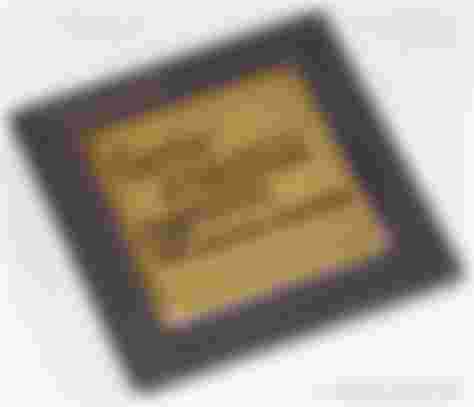Collective computer psychosis
I was wondering for a while, what title should i give to this article. The phenomon i want to explain here, is the one when some cringy tech-autist people start to badmouth a practicular product or brand. Then this malformed oppinion becoming mainstream, and hurts the company severly - sometimes, it even bankrupts them. This happened to several company in the past, i'm going to list a few examples here. All of the examples are from the IT industry.
Pentium4 CPU
When the Pentium3 CPU was released, it was the fastest CPU generation. Its stripped down version, the Celeron, was also popular. With this two CPU line, Intel took the lead in speed. However, as a response to this, AMD released the Athlon (k7) line. It quickly turned out that the Athlon outperforms the Pentium3 - not just on the same clock speeds, but the Athlon was able to reach bigger clock speeds. The AMD won the race for the 1 GHz CPU, and Intel desperately tryed to catch up in performance. They designed the new Pentium4 CPU (released in 2000), which was designed to allow much bigger clock speeds. When the Pentium4 CPU was finally released, both the Athlon and the Pentium3 was around the 1.4 GHz mark.

Pentium4, Pentium3, and the Athlon CPU (Image: Techreport)
The Pentium4 CPU required a new motherboard socket. The early Pentium4 motherboards used a proprietary RAM standard from Rambus, but later on they have swtiched to regular SD RAM-s. The performance of the new Pentium4 was slower than the Pentium3 on the same clock speeds, althrough the speed difference is usually less than 10% (and under some circumistances, the Pentium4 is the faster). Intel was able to scale Pentium4 quickly up to 2.2 GHz, even able to release models for laptops at this speed. AMD released the AthlonXP generation, which was also able to spin the Athlon generations clock speed to about 2 GHz. Despite the fact that Intel had the laptop version available at 2.2 GHz, AMD fanboys succesfully shared hysteria about the Pentium4 line. The original point of the fanboys were: Pentium4 is slower on the same clock speed as the Pentium3, THEREFORE, Intel has to run the CPU on horridly large clock speeds to catch up in performance with AMD. And this large clock speed would result in a very large power consumption and heat dissipation. The AMD propaganda was succesfull, and the Intel Pentium4 became a laughing stock all over the forums.
When nobody really care to check after the numbers
When carefully investigating the Pentium4 based computer's power consumption at 2.2 GHz, we can see that it is actually LOWER than a 2 GHz AMD-s power consumption. The Pentium4 also dissipating less heat than the AMD counterpart. It was possible to construct a Pentium4 based machine around 80w power consumption, but the AMD K7 counterparts ate more than 110 Watts usually, even in idle (offering the same performance). When this fact resulted zero Laptop brands using the AMD Athlon in laptops, the fanboys accoused Intel for illegal market activities, and AMD sued intel for violating antitrust laws. At this point, the Pentium4 CPU was able to scale beyond 3 GHz, in reality, offering 30-70% bigger performance than any AMD chip. Due to the hysteria, a lot of people who was trusting the AMD shills in forums, were actually buying the AMD CPU-s, despite that the Intel Pentium4 was a superior product in every way - until AMD released the Athlon64 in 2003 christmas and leaped forward again.
AMD FX 8350
AMD got the thing back from Intel, when they released the FX 8350 in 2011 october. The previous AMD generattion, the Athlon2/Phenom2 family line competed well against Core2Quad and Core2Duo, but became obsolete when the second generation of Intel I7 was released. AMD annouced the desktop AMD FX line, the CPU family employed 2 to 8 cores, the flagship was the FX 8150 which was quickly replaced by the 8350 model. The 8350 became the flagship CPU of AMD, running at 4 GHz and having 8 cores. The CPU was planned to beat the new generation of i7 CPU-s, but the speed was usually lower. The new CPU family was not just slower than the i7, but on the same clock speed, it was also 10-20% slower than the previous Phenom2 line. This caused large forum trolling against the CPU family on forums, by Intel fanboys. Basically, they repayed the debt of the Pentium4 era - despite the FX 8350 was running at 4 GHz, was very cheap (only $195 at introducion) and was in pair with even some of the more expensive Intel i7 CPU-s, became known as a pathetically weak CPU.

Actually, the FX was a very good desktop CPU family, cheap and fast, the CPU's even can be overclocked with usually more than an extra GHz. But according to forum trolls, AMD was an expensive, slow, and lame CPU, and later AMD had to phase out the product line, and rebrand the CPU's as A8 and A10 in a new socket called FM2 and FM2+.
The fiasco significantly hurt the sales of AMD, the low sales crippled the development for a few years. FM2 based products wasnt really great, especially when they had to compete against the upcoming Intel i7 family, almost causing AMD's market share to fell to zero.
Cyrix 6x86MX
Cyrix was a processor company in the 90s, they was well known for creating fast CPU-s for older motherboards with obsolete sockets. One of they first bigger idea was to release a fast, 486 compatible CPU for the 386 motherboard (pin compatible with the 386SX cpu, but actually implementing 486 instruction set on a larger clock speed). The CPU that really made the company popular, was the Cyrix 5x86, which was a fast Pentium-like CPU for the socket of 486 (Socket3) and was able to run at 100 to 133 MHz, essencially blowing new life to the very old computers. The CPU gave very good performance both under DOS and Windows 95, and a lot of gamers started using it.
The sequel was the Cyrix 6x86 CPU, which was released to the Socket5/7 platform, to compete against the Pentium and the AMD K5 CPU. The 6x86 CPU had a good performance, it was running at 120-150 MHz. It was much faster than the first generation Pentium1, and was just 10% slower than the second generation Pentium MMX CPU, meanwhile the price of the Cyrix CPU-s were just the half of the Pentium MMX. The CPU was succesful, however, shortly after the release, cringy gamers created a negative narrative for the CPU. The newly released game, Quake wasnt running very well on Cyrix. Actually, it wasnt running very well on anything, on a 100 MHz Pentium1 it was running on around 9 fps in 640x480, and was running with about 7 on the first generation of Cyrix 6x86. Which is both unplayable, therefore, ID software later released the GLQuake for Windows, which used OpenGL to employ the graphics card drivers to render the game, allowing playable frame rates on both CPU. However, the cringy autistic gamers of this era, went nuts on the Cyrix 6x86 for being slow in the obsolete version of Quake for years.

When Cyrix released the 6x86MX, which supports new, Pentium2-equivalent instruction set, 200 MHz clock speed, and a bigger integrated L1 cache memory, they have essentially created a chip thats about 2x faster than the previous 6x86. Instead of making a great business in the budget gaming and office sector, they had to deal with derping cyberwarriors about the performance in the DOS version of Quake (which had zero players for ages). These cringy gamers memed Cyrix for creating unrealible CPU-s (which was false). Imagine the modern-day equivalent of this: a bounch of angry minecraft-autists would create millions of posts in every month to badmouth a random phone manufacturer because Minecraft runs 20% slower than on another random phone manufacturer.
The bad impression hold back Cyrix sales in significant quantities. Cyrix was a small american company, only earning a few million dollars, and the result of the fake propaganda, Cyrix slowly lost the money to pay its engineers. The company bankrupted, and ended up being bought for its patents and contracts. Despite of being a small company and only selling a few millions of chips per year, the indirect consequences of the bankrupcy for the american economy could be probably measured in hundreds of billions of usa dollars, as these engineers ended up working in China.



Everything went downhill, when it was reduced to a two-way competition between Intel and AMD. The same goes for GPUs, with now there being only Nvidia and AMD, while in the past, we had 3dfx, 3D Labs, Matrox, S3, Rendition, PowerVR, etc.